#bighorn canyon national recreation area
Text
Day 15
Now for something completely different; today we met a friend that used to work on the mountain with me down in Bighorn Canyon National Recreation Area for a boat tour. This is the third largest canyon in the country and couldn’t be more different from the mountain. Where up top it’s cold, it’s hot here. Where up top it’s lush and green, it’s mostly desert-brown below. There is so much life in the desert, and here you can see abundant bighorn sheep, feral mustangs, black bear, and more.

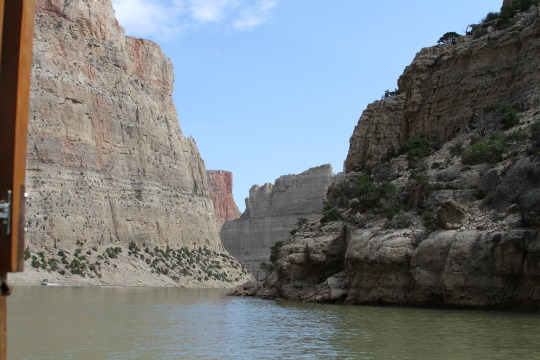
On the boat ride we saw several bighorns munching on some shrubs, some old pueblos left by natives long ago, and the constantly beautiful and ever-changing steep canyon walls. Afterwards, it was getting hot, so we opted to take a look at Devil’s Canyon from the best overlook in the park.

It’s a shame it was 100 degrees, because I have had so many great adventures in this park; from tipi rings, feral horse sightings, being trail blocked by 100 bighorns, to seeing the many small ghost ranches that are remarkable to visit, this is a great hidden gem from the park service.
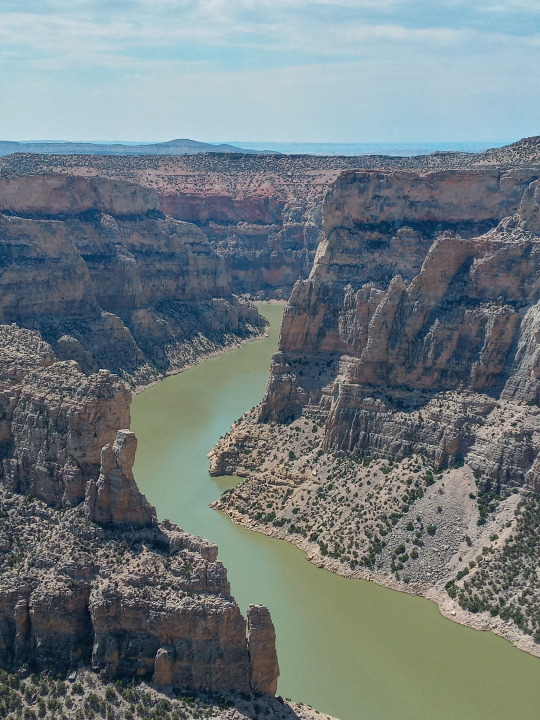
Going to the visitor center, Junior Ranger Badges were attained.
This badge is dedicated to Virginia. I have known you about 25 years now, and I can safely say you have grown and blossomed more than anyone else I know. Your remarkable ability to continue to grow, self-evaluate, and remain an independent and free woman is inspiring, and I am so proud of who you are. Thank you for supporting my fundraiser, not once, but TWICE! But also for pursuing the turbulence of life with gusto, guts, and grace.
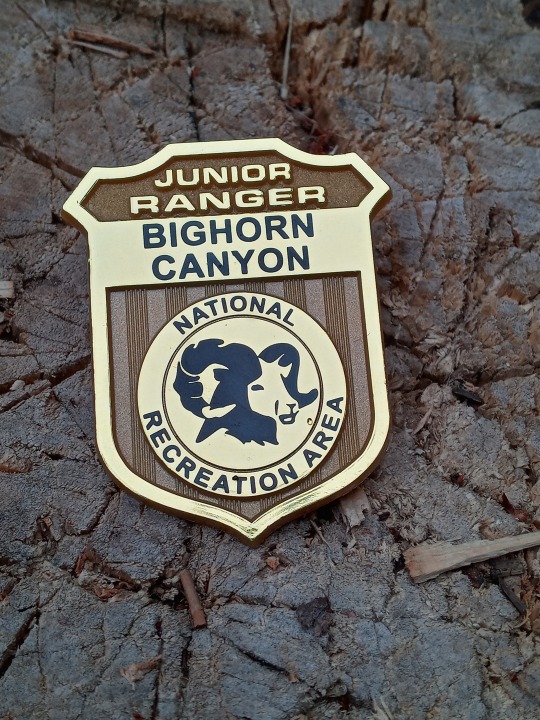
We wrapped up the day by finding a prime hammock and rock-lounging spot to read and hang out. Right on the North Tongue River, this was a go to spot for me when I lived nearby. The sound of the water, getting to soak my sore feet, climbing about on the rocks, all makes for a relaxing and wonderful evening.
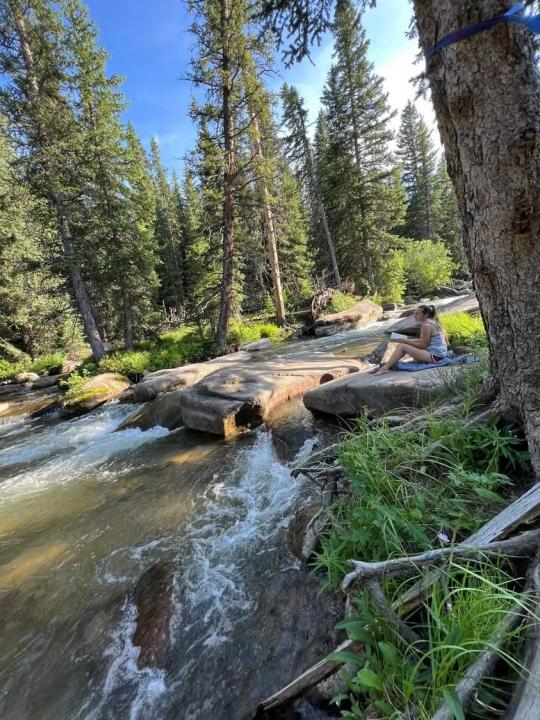
A hui hou,
Haylan
#road trip for a cause#charity#fundraiser#bighorn national forest#national forest#wyo#that's wyo#bighorn canyon national recreation area#national rec area#bighorn canyon#big horn canyon#boat tour#devils canyon#junior ranger#junior ranger badge#ehlers danlos awareness#ehlers danlos life#ehlers danlos society#ehlers danlos syndrome#ehlers danlos#hypermobility spectrum disorder#hypermobility#chronic illness
4 notes
·
View notes
Text
Conservation groups filed objections this week to the U.S. Forest Service’s proposed final management plan for the Grand Mesa, Uncompahgre and Gunnison national forests in western Colorado. The plan would allow commercial logging on more than 772,000 acres of public lands, including mature and old-growth trees — a 66% increase from the current forest plan.
“A sizeable area of our beloved forests could be sacrificed to commercial logging at the expense of our already dwindling wilderness areas, wildlife habitat and recreation,” said Chad Reich with High Country Conservation Advocates. “Outdoor recreation is a far larger economic driver for our communities than the local timber industry that benefits from cutting these forests. The Forest Service would’ve known that if it had conducted an economic analysis, as required by law.”
Under the proposed plan mature and old-growth forests, which store massive amounts of carbon, could be commercially logged. Forest managers would not be required to identify and protect old-growth and mature trees. Steep slopes across the forests, including Upper Taylor Canyon and Slate River Valley, could also be logged despite the high risk of severe erosion and threats to water quality.
“The proposed plan directly violates federal policy on protecting mature and old-growth trees as a cornerstone of U.S. climate action,” said Alison Gallensky, conservation geographer with Rocky Mountain Wild. “The Grand Mesa, Uncompahgre and Gunnison national forests boast the highest carbon sequestration capacity of any national forest in the Rocky Mountain region. Despite this the Forest Service has failed to ensure these vital carbon sinks aren’t logged and sold.”
Objections also challenged the Forest Service’s failure to take urgently needed climate action by prohibiting new coal leasing in the plan.
...
The Forest Service recommended adding only 46,200 acres of new wilderness area in the final plan. The community’s conservation proposal had called for more than 324,000 acres of new wilderness lands. In addition, the Gunnison Public Lands Initiative offered a broadly supported proposal for new wilderness and special management areas in Gunnison County that was mostly excluded.
...
“Community members proposed special management area designations to protect pristine forestlands in the North Fork Valley from logging and oil and gas drilling,” said Peter Hart, legal director at Wilderness Workshop. “The Forest Service ignored those proposals and chose not to protect those areas in the new plan.”
The groups also raised concerns about the plan’s failure to address the myriad needs of plants and animals that depend on the forests.
“Over 20 years ago Colorado Parks and Wildlife reintroduced Canada lynx to the San Juan Mountains,” said Rocky Smith, a long-time forest management analyst. “This is a great source of pride for wildlife lovers in this state. Lynx are federally threatened and depend on mature forests with large trees. This plan allows for logging that could easily degrade or destroy much of the best habitat for lynx and their main prey, snowshoe hares, and undermine Colorado’s hard work to reestablish and maintain a viable lynx population.”
The Grand Mesa, Uncompahgre and Gunnison national forests also provide habitat for the iconic bighorn sheep and lesser-known species like the Grand Junction milkvetch and the Tundra buttercup. These species, among others, need special designation the Forest Service grants to plants and animals when there is concern about their ability to survive in the area. Many struggling plants and animals were left off the list in the proposed final plan.
“Without the species of conservation concern designation the Forest Service has no obligation to make sure the plants and animals continue to exist locally,” said Chris Krupp, public lands attorney with WildEarth Guardians. “In many cases, the agency decided not to designate wildlife, plants or fish merely because it had no data on their population trends. Without species of conservation concern designation, the number of bighorn sheep in GMUG could dwindle down to almost nothing and the agency wouldn’t have to do anything about it.”
#ecology#enviromentalism#old growth forest#colorado#us forest service#lynx#bighorn sheep#grand mesa#Uncompahgre#gunnison#national forest
496 notes
·
View notes
Text

Bighorn Canyon National Recreation Area, Montana 🇺🇲
43 notes
·
View notes
Text

Wyoming Highway
White line on one side, yellow lines down the middle,
confident in lines, we go over a blind hill.
The lines are our sign that the road’s safe ahead,
that the hill’s not a cliff, that leads to our death.
We’re confident that lines, will guide us through safely,
trusting road crew painters, we move along bravely.
Consider the mountain, the sunset, the sunrise,
see the Master Painter, but not through a closed eye.
Beauty, creativity, guide us like road lines,
nature’s roadmap of intelligent design.
I snapped this pic of the Big Horn Mountains from the Montana/Wyoming state line at the conjunction of Montana State Highway 37 and Wyoming State Highway 37 (45th Parallel) inside Bighorn Canyon National Recreation Area.
6 notes
·
View notes
Text
Flaming Gorge: The Ultimate Destination for Water Activities in Vernal
When it comes to exploring the great outdoors, few destinations can rival the breathtaking beauty and endless recreational opportunities offered by Flaming Gorge in Vernal, Utah. Nestled amidst the stunning landscapes of the Uinta Mountains and the Ashley National Forest, Flaming Gorge is a paradise for adventure seekers and nature lovers alike. With its pristine waters, rugged canyons, and abundant wildlife, it's no wonder that Flaming Gorge is hailed as one of the best spots for water activities in Vernal.
Things To Do in Flaming Gorge
Flaming Gorge is renowned for its expansive reservoir, which stretches across the border between Utah and Wyoming. The reservoir, formed by the impoundment of the Green River by the Flaming Gorge Dam, spans over 90 miles in length and boasts over 375 miles of shoreline. With its crystal-clear waters and stunning red sandstone cliffs rising dramatically from the shoreline, Flaming Gorge offers a picturesque backdrop for a wide range of water activities.
Thrilling Adventures
For adrenaline junkies and thrill-seekers, Flaming Gorge is the perfect playground. The reservoir's calm waters are ideal for boating, water skiing, and wakeboarding, while its numerous coves and inlets provide excellent opportunities for kayaking and paddleboarding. Anglers flock to Flaming Gorge in search of trophy-sized trout, including rainbow, brown, and lake trout, making it a premier destination for fishing enthusiasts. Additionally, the reservoir is a popular spot for scuba diving, offering divers the chance to explore underwater caves, rock formations, and submerged relics.
Spectacular Scenery
Beyond its recreational offerings, Flaming Gorge is celebrated for its stunning natural beauty. Visitors can embark on scenic boat tours or kayak excursions to marvel at the towering cliffs, lush forests, and hidden waterfalls that line the reservoir's shores. Hiking and biking trails wind their way through the surrounding wilderness, providing opportunities to encounter wildlife such as bighorn sheep, deer, and bald eagles. Sunset viewpoints offer panoramic vistas of the gorge bathed in golden light, making for unforgettable photo opportunities.
Family-Friendly Fun
Flaming Gorge caters to visitors of all ages, making it an ideal destination for families. The reservoir's calm, shallow waters are perfect for swimming and splashing, while designated swimming beaches provide safe and enjoyable experiences for children. Campgrounds and picnic areas dot the shoreline, offering opportunities for families to relax, barbecue, and roast marshmallows under the stars. Ranger-led programs and interpretive centers provide educational opportunities for youngsters to learn about the area's rich history, geology, and ecology.
Which Are The Best Affordable Hotels in Vernal?
Springhill Suites Vernal is one of the nice hotels near me, offering an inviting haven for bvgf travelers seeking affordability and adventure. Situated near Flaming Gorge, this hotel provides comfortable accommodations with modern amenities, ensuring a relaxing stay after thrilling outdoor escapades. Guests can start their day with a complimentary breakfast before embarking on adventures like rafting down the Green River or exploring the nearby Dinosaur National Monument. With its convenient location and budget-friendly rates, Springhill Suites Vernal is the perfect base camp for adventurers looking to immerse themselves in Vernal's natural wonders without compromising on comfort or cost.
When considering affordable hotels in Vernal with easy access to adventure, TownePlace Suites, Vernal stands out for its convenient amenities and proximity to outdoor attractions. Nestled amidst the rugged beauty of northeastern Utah, TownePlace Suites offers spacious suites, perfect for families or extended stays. Its strategic location places guests within reach of Flaming Gorge and its myriad of recreational activities, from hiking and fishing to boating and wildlife spotting. After a day of exploration, unwind in the hotel's outdoor pool or grill area, enhancing the adventure-filled experience without breaking the bank.
Planning Your Visit
If you're planning a trip to Flaming Gorge, there are several things to keep in mind. Be sure to check the weather forecast and water conditions before heading out, as conditions can change rapidly on the reservoir. Bring plenty of sunscreen, water, and snacks, as services may be limited in remote areas. And don't forget your camera – you'll want to capture every moment of your unforgettable Flaming Gorge adventure.
0 notes
Text
Wyoming
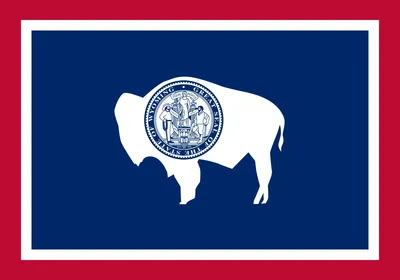
Welcome to Wyoming, the Cowboy State, where you can experience both adventure and tranquility. Wyoming is known for its wide-open spaces, where you can see the stars at night and breathe fresh air during the day. It is a state that is rich in history, culture, and natural wonders, making it a perfect destination for travelers who want to explore the wild and scenic side of the United States.
Wyoming has a fascinating history that dates back thousands of years. The state was home to various Native American tribes, including the Shoshone, Arapaho, and Crow, and played an essential role in the fur trade and westward expansion during the 19th century. Wyoming became a territory in 1868 and a state in 1890, making it the 44th state in the Union.
When it comes to geography, Wyoming is a stunning state that boasts diverse landscapes, including the Rocky Mountains, rolling hills, and wide-open plains. It is the ninth-largest state in the country, with a total land area of 97,818 square miles. Located in the western United States, Wyoming shares borders with Montana, South Dakota, Nebraska, Colorado, Utah, and Idaho.
Wyoming is abundant in natural resources, such as coal, natural gas, and oil, which drive the state's economy. The state is also known for its tourism industry, which offers visitors a chance to explore famous national parks like Yellowstone, Grand Teton, and Devil's Tower. Wyoming has a rich culture that is influenced by western heritage, Native American traditions, and modern art and music.
Whether you are interested in hiking, fishing, skiing, or just relaxing in nature, Wyoming has something to offer people of all ages and interests. In this comprehensive guide, we will explore everything you need to know about Wyoming, from its history and geography to its culture and tourism. So, pack your bags, and let's begin our journey through Wyoming!
Wyoming is a state located in the western United States. It is known for its stunning natural beauty, with vast plains, majestic mountains, and iconic national parks. The state's name is derived from the Delaware Indian word "Maughwauwama," which means "large plains."
Wyoming has a rich history that includes Native American tribes, fur trappers, and the Oregon Trail. The area was originally inhabited by various Native American tribes, including the Shoshone, Arapaho, and Cheyenne tribes. In the early 19th century, fur trappers ventured into the region in search of valuable pelts. The Oregon Trail, a historic wagon route, played a significant role in the westward expansion of the United States, passing through Wyoming.
Geographically, Wyoming is characterized by its diverse landscapes. The state is home to the Great Plains, which stretch across the eastern part of Wyoming, offering vast open spaces and a rich agricultural heritage. In contrast, the western part of the state is dominated by the Rocky Mountains, including the iconic Grand Tetons and the Wind River Range. These mountain ranges provide breathtaking scenery and endless opportunities for outdoor recreation.
One of the state's most famous attractions is Yellowstone National Park, the world's first national park. Yellowstone is renowned for its geysers, hot springs, and abundant wildlife. The park is home to iconic features such as Old Faithful, a geyser that erupts with remarkable predictability, and the Grand Prismatic Spring, a vibrant and mesmerizing natural wonder.
Wyoming also boasts several other national parks and recreation areas, including Grand Teton National Park and Bighorn Canyon National Recreation Area. These protected areas offer opportunities for hiking, camping, fishing, and wildlife viewing. The state's commitment to conservation and preserving its natural habitats is evident in its efforts to protect endangered species such as the black-footed ferret and the grizzly bear.
Wyoming's economy is diverse, with industries such as energy, tourism, agriculture, and mining playing significant roles. The state is a leading producer of coal, natural gas, and wind energy. Its natural beauty and outdoor recreational opportunities attract visitors from around the world, contributing to the tourism industry. Agriculture, including cattle ranching and crop production, is also an important sector of Wyoming's economy.
Throughout the state, you can explore Wyoming's cultural heritage, which includes its Native American tribes and cowboy traditions. Museums, festivals, and events celebrate the state's culture and history. Famous individuals from Wyoming, such as former Vice President Dick Cheney and renowned artist Jackson Pollock, have made significant contributions to politics and the arts.
Whether you're seeking outdoor adventure, cultural exploration, or simply a glimpse of the stunning natural beauty, Wyoming offers a wealth of experiences. From its majestic mountains to its vibrant plains, this state is a treasure waiting to be discovered.
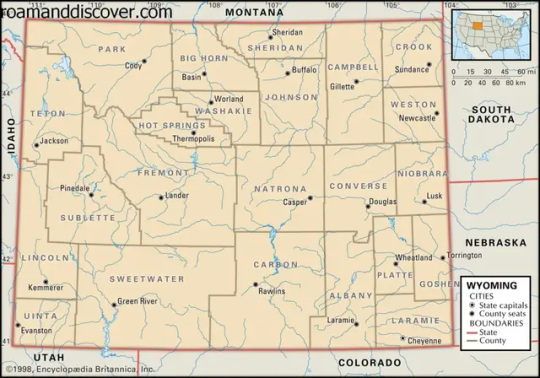
1. History of Wyoming
Wyoming, a state located in the western United States, has a fascinating history that encompasses Native American tribes, fur trappers, and the Oregon Trail. The early inhabitants of Wyoming were Native American tribes such as the Shoshone, Arapaho, and Cheyenne. These tribes have inhabited the region for thousands of years, leaving behind a rich cultural heritage.
During the 19th century, Wyoming became a significant area for fur trapping, attracting explorers and traders. The fur trade played a crucial role in the state's early economy and brought European settlers to the region. However, it was the Oregon Trail that truly shaped Wyoming's development. The Oregon Trail served as a major route for pioneers heading westward during the mid-1800s, bringing thousands of settlers to the area.
Wyoming's history is also intertwined with the expansion of the United States. The state witnessed conflicts between Native American tribes and the U.S. government, including the Battle of Little Bighorn, where Lakota Sioux and Cheyenne warriors defeated General George Custer's forces. Wyoming's history also includes the establishment of military outposts and the development of the transcontinental railroad, which played a crucial role in connecting the East and West coasts of the United States.
Today, Wyoming's rich history is celebrated through various museums, historical sites, and events that showcase the state's cultural heritage. Visitors can explore the Oregon Trail Historic Sites, visit the Fort Laramie National Historic Site, or learn about Native American history at the Wind River Indian Reservation. Wyoming's history is a testament to the resilience and spirit of the people who have shaped the state into what it is today.
2. Geography and Climate
Wyoming, located in the western United States, boasts a diverse geography that offers breathtaking natural beauty. From the expansive Great Plains to the majestic Rocky Mountains, the state is a haven for outdoor enthusiasts and nature lovers alike.
One of Wyoming's most notable geological formations is Yellowstone National Park. This iconic national park is home to mesmerizing geysers, such as the famous Old Faithful, which erupts with stunning precision. The park also features the Grand Prismatic Spring, a vibrant and captivating natural wonder with its vivid colors and unique microbial life.
In addition to Yellowstone, Wyoming is also known for the Grand Tetons. These towering mountains offer awe-inspiring vistas and countless hiking trails for adventurers to explore. Whether you're an experienced hiker or a casual nature enthusiast, the Grand Tetons are sure to leave you in awe of their grandeur.
When it comes to climate and weather, Wyoming experiences a range of conditions throughout the year. The state's high elevation and continental climate contribute to its distinct weather patterns. Summers are generally warm with mild temperatures, while winters can be harsh and snowy, especially in the mountainous regions.
Overall, Wyoming's geography and climate offer a unique and captivating experience for visitors. Whether you're exploring the vast plains, hiking through the majestic mountains, or marveling at the geological wonders, the state's natural beauty is sure to leave a lasting impression.
2.1 Natural Wonders
Wyoming is a treasure trove of natural wonders, and at the top of the list is Yellowstone National Park. Established in 1872, it holds the distinction of being the world's first national park. Spanning over 2.2 million acres, this vast wilderness is a paradise for nature lovers and adventure seekers alike.
Yellowstone National Park is renowned for its mesmerizing geysers, hot springs, and bubbling mud pots. The most famous geyser in the park is the iconic Old Faithful. As its name suggests, Old Faithful erupts with remarkable predictability, shooting a column of scalding water high into the sky. Witnessing this natural spectacle is truly awe-inspiring.
But the wonders of Yellowstone don't end with geysers. The park is also home to an incredible array of wildlife, including grizzly bears, wolves, elk, and bison. Exploring the park's vast network of trails, you might come across these majestic creatures in their natural habitat. Keep your camera ready for those breathtaking encounters.
Aside from Yellowstone, Wyoming boasts other natural wonders that will leave you spellbound. The Grand Prismatic Spring, located in Yellowstone, is a sight to behold. Its vivid colors, ranging from deep blue to vibrant orange, are a result of the presence of heat-loving microorganisms. This kaleidoscope of hues is a testament to the wonders of nature's artistry.
Whether you're a nature enthusiast, a wildlife lover, or simply seeking adventure, Wyoming's natural wonders will captivate your senses and leave you with memories that will last a lifetime.
2.1.1 Old Faithful
One of the most famous attractions in Yellowstone is the Old Faithful geyser. This natural wonder has captivated visitors for decades with its predictable eruptions and stunning displays of power. But what makes Old Faithful so reliable?
The science behind Old Faithful's eruptions lies in its unique geological features. Deep beneath the Earth's surface, there is a reservoir of superheated water. As this water rises to the surface, it encounters a narrow and constricted channel known as the geyser's plumbing system. This channel acts as a natural pressure cooker, trapping the water and steam until the pressure becomes too great, causing the geyser to erupt.
Unlike other geysers, Old Faithful has a remarkably consistent eruption pattern. It erupts approximately every 90 minutes, shooting water and steam up to 180 feet in the air. This predictability is what earned it the name "Old Faithful." Early explorers and settlers in the area were amazed by its reliability, and it became a popular destination for tourists.
Today, visitors from around the world gather around Old Faithful, eagerly awaiting its next eruption. The geyser's eruptions are not only a spectacle to behold but also a reminder of the incredible forces at work beneath the Earth's surface. It serves as a testament to the dynamic nature of Yellowstone National Park and the wonders of nature.
2.1.2 Grand Prismatic Spring
The Grand Prismatic Spring is a natural wonder that never fails to mesmerize visitors with its vibrant colors and unique microbial life. Located in Yellowstone National Park, this spring is a sight to behold. The striking hues of blue, green, yellow, and orange create a stunning visual display that is truly breathtaking.
But what makes the Grand Prismatic Spring so colorful? The answer lies in the geological processes that occur beneath the surface. This spring is a hot spring, which means that it is heated by geothermal energy from the Earth's interior. As the hot water rises to the surface, it brings with it minerals and microorganisms.
The vibrant colors of the Grand Prismatic Spring are a result of these microorganisms. The water contains different types of bacteria and algae, each thriving in different temperature zones. The colors are a reflection of the specific temperature conditions and the pigments produced by the microorganisms.
The outer edges of the spring are cooler, creating an environment suitable for orange and yellow bacteria. As the water gets hotter towards the center, it becomes ideal for green and brown bacteria. The combination of these different colors creates the mesmerizing rainbow-like effect that is characteristic of the Grand Prismatic Spring.
In addition to its stunning colors, the Grand Prismatic Spring is also home to a unique microbial ecosystem. The microorganisms living in the spring play a crucial role in the ecosystem by converting the mineral-rich water into organic matter. This process supports the growth of other organisms, such as insects and birds, creating a delicate balance of life.
Visiting the Grand Prismatic Spring is a truly awe-inspiring experience. As you walk along the boardwalk that surrounds the spring, you can witness the beauty of nature's artistry up close. The vibrant colors, the steam rising from the water, and the sound of bubbling geothermal activity all combine to create a sensory feast.
So, if you ever find yourself in Wyoming, make sure to visit the Grand Prismatic Spring. It is a testament to the wonders of the natural world and a reminder of the incredible geological processes that shape our planet.
2.2 Mountain Ranges
Wyoming is blessed with the presence of several breathtaking mountain ranges, making it a paradise for outdoor enthusiasts and nature lovers. Two of the most prominent mountain ranges in the state are the Grand Tetons and the Wind River Range. These majestic peaks offer not only awe-inspiring beauty but also a plethora of recreational opportunities. The Grand Tetons, located in the northwestern part of Wyoming, are a sight to behold. Rising abruptly from the surrounding plains, these rugged peaks create a dramatic backdrop for the picturesque Jackson Hole valley. Hiking enthusiasts can explore a network of trails that traverse the mountains, offering stunning vistas and the chance to spot wildlife such as elk, moose, and even grizzly bears. The Grand Tetons also provide excellent opportunities for rock climbing, with their challenging granite faces attracting climbers from all over the world. The Wind River Range, located in western Wyoming, is another mountain paradise waiting to be discovered. Spanning over 100 miles, this range is home to more than 40 peaks exceeding 13,000 feet in elevation, including Wyoming's highest point, Gannett Peak. Hikers and backpackers can embark on multi-day adventures through the Wind River Range, exploring pristine alpine lakes, cascading waterfalls, and lush meadows. The range also offers world-class fishing opportunities, with its numerous lakes and rivers teeming with trout. In addition to hiking and fishing, these mountain ranges provide a playground for a wide range of outdoor activities. Mountain biking, horseback riding, and camping are popular pursuits in both the Grand Tetons and the Wind River Range. During the winter months, snow enthusiasts can enjoy skiing, snowboarding, and snowshoeing in the snowy wonderland of these mountains. Whether you are seeking solitude and serenity or adrenaline-pumping adventures, the mountain ranges of Wyoming have something for everyone. So lace up your hiking boots, pack your fishing rod, and get ready to immerse yourself in the natural beauty and endless possibilities of the Grand Tetons and the Wind River Range.
3. Wildlife and Conservation
Wyoming is a paradise for wildlife enthusiasts, offering a diverse range of species and habitats. The state is home to iconic animals such as bison, elk, wolves, and bears, making it a haven for nature lovers and wildlife photographers. From the vast open plains to the rugged mountain ranges, Wyoming's natural landscapes provide a perfect habitat for these magnificent creatures.
Conservation efforts play a crucial role in preserving Wyoming's rich biodiversity. The state recognizes the importance of protecting its natural habitats and has implemented various initiatives to ensure the survival of its wildlife. These efforts include the establishment of protected areas, such as national parks and wildlife refuges, where animals can thrive undisturbed.
Yellowstone National Park, located primarily in Wyoming, is a prime example of successful conservation. It is not only home to a diverse range of wildlife but also serves as a sanctuary for endangered species. The park's unique ecosystem, which includes geothermal features and abundant food sources, supports a thriving population of animals.
Preserving Wyoming's natural habitats is not only essential for the survival of its wildlife but also for maintaining the ecological balance. The state's diverse ecosystems provide crucial services, such as water filtration, carbon sequestration, and pollination, which are vital for human well-being.
By protecting Wyoming's natural habitats, we ensure that future generations can continue to enjoy the beauty and wonder of its wildlife. It is our responsibility to be good stewards of the land and to support conservation efforts that safeguard the state's natural heritage.
So, whether you're a wildlife enthusiast, a nature lover, or simply someone who appreciates the beauty of the natural world, Wyoming is a destination that should be on your bucket list. Explore its stunning landscapes, encounter its diverse wildlife, and witness firsthand the importance of conservation in preserving our planet's precious resources.

Bison
3.1 Yellowstone National Park
Yellowstone National Park is a world-renowned natural wonder located primarily in Wyoming, but also extending into Montana and Idaho. Established in 1872, it holds the distinction of being the first national park in the United States and is widely considered the birthplace of the national park system.
What makes Yellowstone truly remarkable is its unique ecosystem, which is home to a diverse range of plant and animal species. The park boasts an incredible array of wildlife, including grizzly bears, wolves, elk, bison, and many others. Visitors to Yellowstone have the opportunity to witness these magnificent creatures in their natural habitat, making it a sanctuary for both wildlife and nature enthusiasts.
The park's ecosystem is shaped by various natural features, such as the famous geysers and hot springs. The most iconic of these is the legendary Old Faithful geyser, which erupts with remarkable regularity, captivating visitors with its spectacular displays. Other notable geothermal features include the Grand Prismatic Spring, known for its vibrant colors and unique microbial life.
However, Yellowstone National Park also faces numerous challenges. One of the primary concerns is the delicate balance of its ecosystem. The park's wildlife populations must be carefully managed to ensure their long-term survival. Additionally, the park grapples with issues such as invasive species, habitat degradation, and the impact of climate change.
Read the full article
0 notes
Text
Horseshoe Bend Rafting Experience
If you are visiting Arizona and have no idea where to go, the city of Page, AZ is a great place to start. It is a small town located in the northern part of Arizona and is close to the beautiful Lake Powell. The famous Lake Powell was named after John Wesley Powell, an American explorer, ethnologist, and geologist.
Lake Powell is one of the city's most popular tourist spots in the Colorado River, where you can enjoy several activities for the whole family. It is a man-made water reservoir that was a product of the flooding of Glen Canyon that was caused by the Glen Canyon Dam. This is also the reason why Glen Canyon National Recreation Area was created.
Rafting trips are the most common activities when you visit this city. Some of the exciting rafting trips to try are Glen Canyons float trips, Colorado River rafting, and the famous Horseshoe Bend rafting trip. Any of these rafting trips will surely give you the best wilderness river adventures you"ll ever experience.
If you are not into rafting trips, you can do other activities like hiking. You even get the chance to see real-life great blue herons and bighorn sheep. A tour guide will assist you on the right way to follow during the hike and will even tell stories about the place like the mining culture, the ancestors' way of life, the history of the great Glen Canyon Damn, and the Petroglyph Beach.
youtube
youtube
Exploring the Colorado River
This magnificent body of water is 1, 450 mile long and surrounds some parts of the seven states in the U.S. and two other Mexican states. It is famous for its great canyons and magnificent rapids. By exploring the Colorado River alone, you will get to experience several breathtaking canyons like the famous Grand Canyon, Marble Canyon, and Glen Canyon.
Aside from the stunning sights at the Colorado River, your guide will show the amazing and ancient houses of canyon dwellers from thousands of years ago. One day is not enough to explore everything you need to see around the Colorado River, so be sure to take a few more days off from work to maximize your vacation.
Other astonishing places that you can enjoy at Page, AZ are the following:
Horseshoe Bend
Glen Canyon Recreation Area
Grand Canyon National Park
Petroglyph Beach
Lees Ferry
Vermillion Cliffs
Activities to Try:
Sightseeing at Glen Canyon Dam
Learning the Glen Canyon Dam history
Glen Canyon Float Trips
Aerial sightseeing
Half-day Horseshoe Bend rafting experience
A cool dip at the Petroglyph Beach
Camping and Hiking
Wilderness river adventure
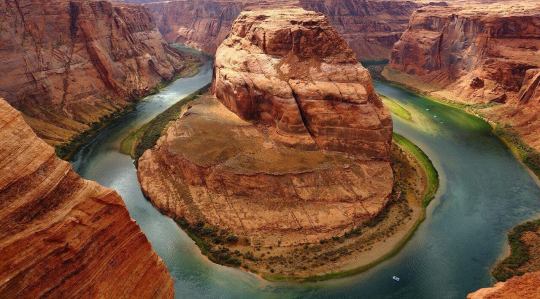
Horseshoe Bend Rafting Trip
Whatever it takes, you need to experience the Horseshoe Bend rafting, whether it is a whole day trip or a half-day rafting trip. Horseshoe Bend is a sight on its own. Its almost perfect circular canyon lets people admire its clear blue-green water.
Horseshoe Bend can be crowded with lots of tourists but if you want to avoid large crowds, you can always avail yourself of their airplane tour. Nothing beats the view of Horseshoe Bend and Lake Powell from the top, however, your trip will not be complete without seeing a complete Horseshoe Bend rafting trip.
Half-day is enough for a Horseshoe Bend rafting experience. There are several resorts and other travel and tour companies that offer tours for your rafting trips. You only need to allot at least half of your day to Horseshoe Bend rafting. So what can you expect when you avail one of these half-day rafting trip?
The usual rafting trip normally starts with a two-mile tunnel drive. Within this tunnel drive, you get to experience dinosaur tracks before boarding your river raft. Your wilderness river adventures start here as you enjoy the sights of Petroglyph Beach and the captivating artifacts.
After your wilderness river adventures from your river craft, you will then transfer to a motor coach ride. By this time, you are already at Lees Ferry going back to Page, AZ. During your motor coach ride, along the way, you will pass by Lees Ferry, sandstone walls, and other historic landmarks and structures.
After your half-day Horseshoe Bend adventure, be sure to maximize your trip while you are still in Page, AZ.
River Raft Safety Tips
If it is your first time trying river rafting, it is best to know the safety guidelines before doing it. Here are some safety tips before you go on your river raft adventure:
Always wear a life jacket even if you know how to swim.
Learn how to hold the paddle the right way.
Always listen and follow your guide.
Be attentive during the safety talk and take note of the commands.
Do not panic.
Learn the different swimming techniques.
Wear proper attire.
Horseshoe Bend Rafting Policy
Before you avail of your wilderness river adventures at Horseshoe Bend, be sure to take note of the policies that come with it. This is to avoid any unnecessary hassles during your raft trip.
Some of the things you need to check out are the payment, cancellations, pricing or rates, minimum passenger, pet policy, trip schedule, and other pertinent information that you need for the trip.
Once you have booked your half-day Horseshoe Bend rafting trip, be sure to be there to avoid paying any cancellation fee, if there's any. The Canyon National Recreation has the right not to fully refund for no-shows and late cancellations.
Under the guidelines of the National Park Service, there may be additional guidelines or policies due to Covid. So best to check first to see if there are any updates or changes that you need to know.
Important Reminders
Call river headquarters first and check their schedule before visiting.
Only backpacks or small bags are allowed during your rafting trips.
Weapons of any kind are strictly prohibited, even cigarette lighters and utility tools.
Do not forget to bring your camera to capture the beauty of the place
Wear proper attire
Bring sunblock and extra set of clothing
Best to bring food, water, and other drinks
Always treat people with respect
Follow health and safety guidelines
Follow the check-in and check-out time, rates, pet policy, and age restrictions
Always check in with your team or companion before and after raft trips
Due to Covid, follow safety protocols and bring your own sanitary kits and mask
Observe proper physical distancing
Final Thoughts
Horseshoe Bend in Page, AZ is truly a place worth visiting. The good thing too is that a half-day rafting trip is enough to experience it. This means you still have a lot of time to explore other interesting sights nearby. You still have ample time to check out the Glen Canyon Dam and try the Glen Canyon float trips.
Traverse Grand Canyon from Lees Ferry through a raft trip. In, addition to this, be sure to also drop by at the Canyon National Recreation Area or river headquarters for updates or other information like rates, check-in times, Grand Canyon, and Glen Canyon tours, accommodations, and other activities you can experience in the Colorado River.
If you are planning to spend a couple of days in the area, book ahead of time to find the best hotel and accommodation during your trip. Just be mindful of the check-in times for a smoother and hassle-free trip.
Now, go and treat yourself and the whole family to a one-of-a-kind wilderness river adventures you will all never forget. All thanks to National Park Service for taking good care of these special places so that people can enjoy and experience the American heritage. Don't forget to bring your cameras so you can capture and treasure your fun memories.
Frequently Asked Questions
Is Horseshoe Bend worth visiting?
Yes, it is a must-see place to visit. It is one of the top tourist destinations not only in Glen Canyon Recreation Area but in the whole city of Page, AZ.
How deep is the water at Horseshoe Bend?
It is roughly 1,000 ft. deep.
How long does it take to kayak Horseshoe Bend?
It may take you around 6-7 hours of paddling to complete the whole stretch of Horseshoe Bend.
How long does it take to walk to Horseshoe Bend?
It usually takes about an hour to hike Horseshoe Bend Trail.
When is the best time for a Horseshoe Bend rafting experience?
The best time to do the Horseshoe Bend rafting trip is between midday to early afternoon.
Is one day enough for a trip in Glen Canyon Float Trips?
You can spend a half-day float trip at Glen Canyon National Recreation.
Is there a park entrance fee?
Yes, you need to pay a certain park entrance fee. Rates vary.
Is there any person processing fee?
It may depend on the tour company's policy if you availed one.
Where can I get additional information about Horseshoe Bend and their wilderness river advantures?
You can call the river headquarters or check online for more information.
0 notes
Text
thick, and a safe distance from the work
Now, as Bruce changed the lumber from the raw spot on his right shoulder to the raw spot on his left shoulder he was wondering how much more of a chance was due Jennings, how much longer he could hold his tongue. A more extended acquaintance with his “practical man” had taught him how easily a virtue may become a fault.
In his insistence upon solidity and exactitude he went beyond the point of careful workmanship and became a putterer. He was the King of Putterers. He could out-putter a plumber. And when he had finished it was usually some unimportant piece of work that any man who handled tools could have done as well in half the time.
Bruce had a favorite bush, thick, and a safe distance from the work, behind which it was his wont to retire at such times as the sight of Jennings puttering while the crew under him stood idle, became too much for Bruce’s nerves.
—
Caroline Lockhart, The Man from Bitter Roots (1915) : 237
same (NYPL copy, hathitrust)
The manuscript (two years’ worth of work) was lost at the bottom of the Caribbean waters; Lockhart laughed it off, and wrote it again. See Mary Shivers Culpin, Caroline Lockhart Ranch, Bighorn Canyon National Recreation Area. Rocky Mountain Regional Office, National Park Service (October 1981) : 11-12 (pdf via waybackmachine)
Shrewd observations of character; the plot itself is nigh impossibly complicated (at least judging from synopses of the 1916 movie of the same title, including this at IMDB, and another at AFI Catalog of Feature Films (waybackmachine)
Caroline Lockhart (1871-1962), journalist, novelist, newspaper owner/editor, anti-prohibitionist, litigator, rancher
wikipedia
John Clayton, “The Old West’s Female Champion: Caroline Lockhart and Wyoming’s Cowboy Heritage,” wyominghistory.org (November 8, 2014)
more photos at
“Caroline Lockhart Elected to the National Cowgirl Museum and Hall of Fame”
American Heritage Center, University of Wyoming
https://ahcwyo.org/2018/07/16/ (July 16, 2018)
1 note
·
View note
Photo
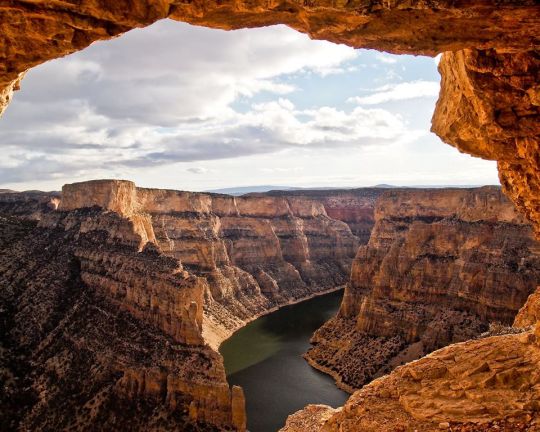
What a view! The vast, wild landscape of Bighorn Canyon National Recreation Area offers visitors incredible opportunities to experience the bold thrills and serene moments. With over 120,000 acres in Montana and Wyoming and more than 10,000 years of human history to explore, visitors can hike 28 miles of trails, hunt, fish and camp to their heart's delight. Wildlife in the park includes bighorn sheep, wild horses, coyotes, mule deer, snakes, small mammals, mountain lions, bears and more than 200 bird species. We hope you have plenty of time! Photo by Ben Goodlad, National Park Service.
#bighorn canyon national recreation area#bighorn canyon#national recreation area#National Park Service#NPS#usinterior#Montana#Wyoming#public lands#outdoors#america's great outdoors#nature#landscape#canyon#amazing view#awesome experience#travel
569 notes
·
View notes
Photo



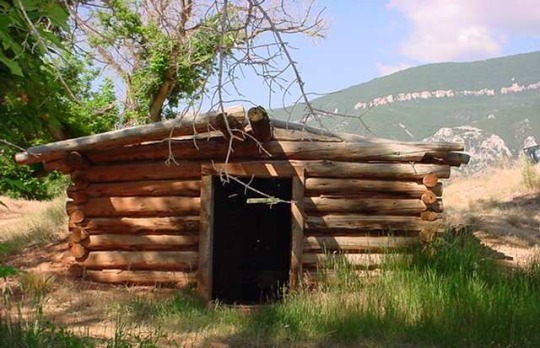
Caroline Lockhart: Author, Newspaper Publisher, Investigative Reporter, Rancher
Caroline Lockhart began her career as a journalist at the age of 18. In 1889, she became a reporter on the Boston Post. She quickly became known for her adventuresome, independent spirit, pursuing tough assignments as she developed one of her literary principles: “…I have endeavored to know what I am writing about before I write.”
Later, traveling on assignment for a story about the Blackfeet Indians, Lockhart found Cody, Wyoming and the surroundings to be to her liking. It was also a useful backdrop and inspiration for her books, often focused on western themes and characters.
The Lockhart Ranch
In 1926, she purchased a ranch in Montana, located in what is today Bighorn Canyon National Recreation Area. She inherited a two-room cabin, a few run-down sheds, and 20 acres of cultivated ground from the previous owners of the ranch. In addition to it being her residence and a retreat in which to pursue her writing, she added to the acreage and developed a sizable commercial ranching operation. She landscaped the area around the cabin with irises and hollyhocks, planted cottonwood trees for shade, and built stone pathways. She also constructed fences, corrals, irrigation systems, and additional structures.

Main ranch house at Lockhart Ranch (NPS).
Life on the ranch, which she expanded in size to over 6,034 acres, was mostly self-sufficient, as evidenced by features of the landscape. A storage building was used to keep potatoes, apples, and meats. Milk, butter, and eggs from ranch cows and chickens went from the milk shed and the chicken coop to the spring house to chill. A small apple orchard was an important part of the ranch agriculture. Maintaining equipment, repairing items, and shoeing horses made the blacksmith shop a necessity. In the corrals, livestock were branded and separated for sale.
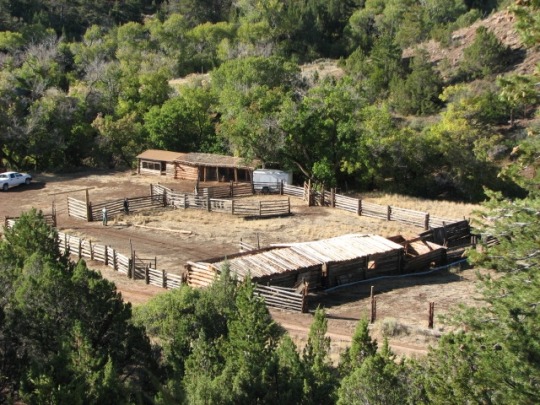
Corral at Lockhart Ranch (NPS).
Today, the ranch landscape appears much as it did when Caroline Lockhart was living there. It provides visitors with a window to the operations of a ranch in the Dryhead area during the first part of the 1900s and an introduction to the spirited woman who embraced this part of the country in both her life and her writing.

An ornamental willow gate hangs partially open, welcoming visitors to the Lockhart Ranch (NPS).
Sources and More
Caroline Lockhart and the Caroline Lockhart Ranch, Bighorn Canyon National Recreation Area
Caroline Lockhart Ranch: National Register of Historic Places Nomination
Historic Ranches of Bighorn Canyon National Recreation Area
Caroline Lockhart Ranch, Bighorn Canyon National Recreation Area (Draft, 1981)
Images of Lockhart Ranch
Artist-in-Residence Program at Bighorn Canyon
More about NPS cultural landscapes
This month, we are exploring a few of the NPS cultural landscapes associated with writers and writing. Catch any you missed or add your own favorites with #literarylandscapes
#literarylandscapes#cultural landscape#NPS#Bighorn Canyon National Recreation Area#National Park Service#ranch#writing#author#Caroline Lockhart#women's history#journalism#preservation#Montana
34 notes
·
View notes
Photo

"Bighorn Canyon National Recreation Area is a breathtaking site and I hope my poster encourages people to visit. In this poster I tried to capture and bring forth the gorgeous colors Bighorn has to offer with acrylic paint and then using pointillism to soften and create an eye catching image. The canyon in twilight is really something magical to behold" - Lauren White for See America.
#bighorn#bighorn canyon#bighorn canyon recreation area#national park poster#park poster#travel poster#seeamerica#see america#creativeactionnetwork#creative action network
1 note
·
View note
Photo
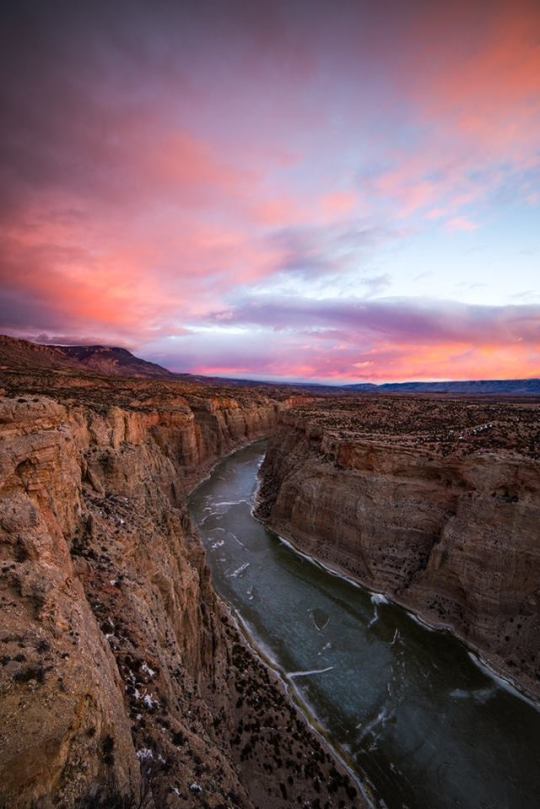
Bighorn Canyon National Recreation Area
1 note
·
View note
Photo

It’s so nice to be back on the road since the COVID outbreak! Decided it was time to get out and see a new part of the country, and so far, it does not disappoint. I’ve spent the last day or so in @bighorncanynps, although I rolled into town in blustery cold and rainy weather. So, good morning from BICA! It is much more beautiful than I anticipated, and a lot to explore. 📍: Bighorn Canyon National Recreation Area, WY/MT 📅 : April 2021 .................................................. 📷: Nikon Z7 🔍: Nikon 24-70/4s #unitedbynature #IBrakeForBrownSigns #nationalparkgeek #ZCreator (at Bighorn Canyon National Recreation Area) https://www.instagram.com/p/COLHOsIntI7/?igshid=15eaiammnqtm
1 note
·
View note
Video
youtube
Bighorn Canyon National Recreation Area has all kinds of hidden treasures to explore, including the Caroline Lockhart Ranch (who is my new hero, and she should be yours too.)
#As the Magpie Flies#The Pilgrimage#amfpilgrimage#Lazarus#Women Who Ride#Bighorn Canyon#National Recreation Area#Caroline Lockhart#Vlog#Moto Vlog#Video#Motolady#Travel#Adventure Travel#Motorcycles#Montana#montana moment#motorcycle camping
4 notes
·
View notes
Photo

Bighorn Canyon at Dawn 2, Bighorn Canyon National Recreation Area, MT-WY Border
#landscape#bighorncanyon#bighornriver#canyon#montana#wyoming#nationalpark#nationalrecreationarea#roadtrip
44 notes
·
View notes
